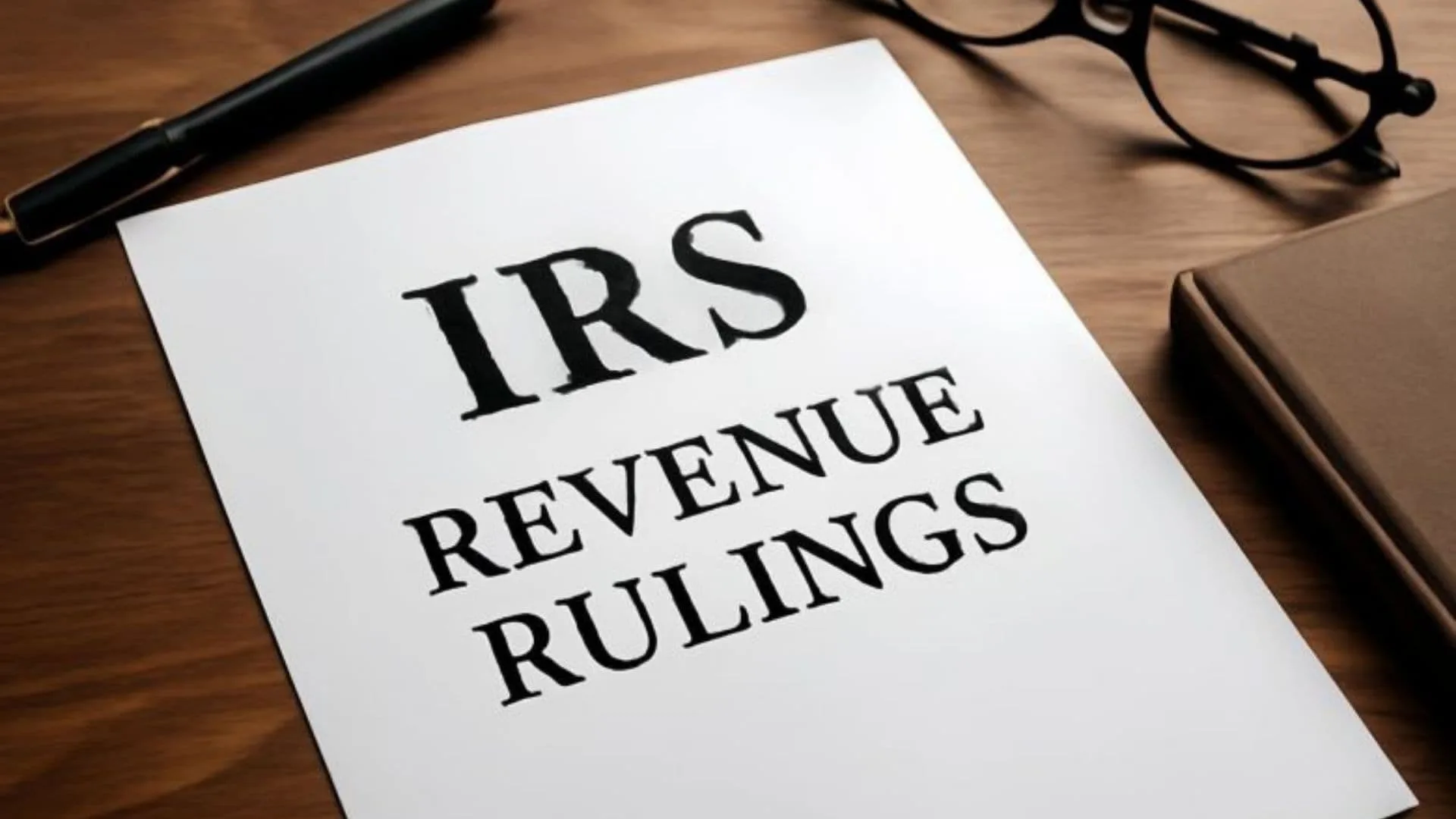
If you’ve ever wondered how the Internal Revenue Service (IRS) values shares in a privately held company—especially when they aren’t publicly traded—then Revenue Ruling 59-60 is your crash course in business appraisal basics. This IRS ruling, originally issued in 1959, sets out the general approach, methods, and factors to be considered when valuing capital stock of closely held corporations (or similarly thinly-traded corporations) for estate tax and gift tax purposes. While it doesn’t offer a one-size-fits-all formula (valuation isn’t THAT simple!), it gives a robust framework anchored in the concept of “fair market value” between a willing buyer and willing seller under no compulsion. Over the decades it’s become widely cited in business valuation circles, not just for tax matters but also for litigation, divorce, mergers and acquisitions, and other contexts where one needs to establish value for a private business.
Why Does Revenue Ruling 59-60 Matter?
Valuing a business is notoriously messy—there’s no ticker symbol, no deep liquidity, no market bid-ask spread for many of these privately held companies. Revenue Ruling 59-60 helps bring structure to that chaos by telling us what to look at (and how) when dealing with closely held stock. It’s particularly important in:
- Estate tax situations (where a decedent’s ownership interest must be valued under § 2031 of the Internal Revenue Code)
- Gift tax contexts (when ownership interests are gifted and must be valued under § 2512)
- Business valuations for disputes, divorces, buy-sell agreements and more (because courts and valuers often reference it)
Key Elements of the Ruling
Purpose and Scope
The ruling begins by stating that its purpose is to “outline and review in general the approach, methods and factors to be considered in valuing shares of the capital stock of closely held corporations for estate tax and gift tax purposes.” It further emphasizes that it also applies to “corporate stocks on which market quotations are either unavailable or are of such scarcity that they do not reflect the fair market value.”
This means if you own shares in a company where there’s no active trading market, you can’t just look up a quoted price—you need a full valuation.
Definition: Fair Market Value
One of the core definitions the ruling uses: fair market value is the price at which property would change hands between a willing buyer and a willing seller, neither under compulsion, both having reasonable knowledge of relevant facts. That hypothetical standard is a foundation for valuation work—not just what someone paid in a forced sale, but what a hypothetical arm’s-length transaction would yield.
Approach to Valuation
The ruling makes clear: there’s no formula that applies universally. Valuation is “a question of fact” and depends on circumstances. The appraiser or analyst must exercise judgment, consider all relevant data, apply common sense, and weigh facts characteristic of the business and the market at the “as-of” date of valuation.

The Eight Fundamental Factors
According to Revenue Ruling 59-60, when valuing closely held stock (or stock of companies without reliable market quotes), at minimum these eight factors must be considered:
- The nature of the business and the history of the enterprise from its inception.
- The economic outlook in general and the condition and outlook of the specific industry in particular.
- The book value of the stock and the financial condition of the business.
- The earnings capacity of the company.
- The dividend-paying capacity (even if dividends weren’t paid historically).
- Whether or not the enterprise has goodwill or other intangible value.
- Sales of the stock and the size of the block of stock to be valued.
- The market price of stocks of corporations engaged in the same or similar line of business that are actively traded.
Each of these factors gets a built-in explanation in the ruling (and subsequent commentary in the valuation world) about how they should be assessed, adjusted and weighed.
Applying the Factors: What Does It Look Like in Practice?
Let’s unpack a few of these to illustrate how they’re applied:
- Nature and history of business: A private manufacturing firm that has been operating steadily for 20 years, with consistent earnings and succession planning, will score differently than a new startup with erratic revenue. The ruling calls for looking at growth, stability, diversity of operations, management, and more.
- Economic outlook & industry condition: If the industry is declining or facing existential threat, that negatively impacts value. Conversely, a company in a strong growth sector has positive tailwinds.
- Book value & financial condition: Appraisers will typically review multiple years of balance sheets, work out liquid assets, long-term debt, non-operating assets, etc.
- Earnings capacity: Past earnings are normalized for non-recurring items, then capitalized at an appropriate rate to estimate value. (The ruling also goes into capitalization rates.)
- Dividend-paying capacity: Even in private companies where dividends aren’t historically paid (because owner uses profits for reinvestment), capacity matters as a theoretical indicator of value.
- Goodwill & intangible assets: Brand reputation, customer relationships, patents, etc., even if difficult to quantify, must be considered.
- Sales of stock / size of block: If there are recent transactions of the same company’s shares (arm’s length) those may be strong indicators. Also, the size of the block of shares under valuation matters (larger blocks may include control premiums).
- Comparable market price: If there are publicly traded companies in the same or similar line of business, their valuations can provide benchmarks — but careful screening is required.
Weighting & Capitalization: The “How Much” Question
One of the trickiest parts is how much weight to give each factor, and how to select the appropriate capitalization rate when using earnings or dividends. The ruling asserts that since each situation is unique, you can’t standardize mathematical weights or simply average various approaches.
The valuation professional must determine which factors are most relevant given the circumstances. For example:
- In a pure holding company (asset-holding entity) the “net asset value” approach may dominate.
- For an operating business heavily dependent on earnings and growth, the income approach may dominate.
When selecting a capitalization rate, the expert considers the nature of the business, risk involved, stability/irregularity of earnings. The ruling warns against relying on simple tables of rates.
Restrictive Agreements & Other Considerations
The ruling also highlights that one must not ignore restrictive agreements (buy-sell, repurchase options, right of first refusal, etc.). These may affect value for estate/gift tax purposes if they limit the marketability or transferability of shares. In short: if shares are subject to agreements restricting sale or repurchase by issuer, that may reduce value—but each case demands fact‐specific analysis.
The Legacy & Broader Use of Revenue Ruling 59-60
Though drafted in 1959, Revenue Ruling 59-60 has had enduring relevance. Many valuation experts consider it the foundational source for private business valuations. Courts have cited it in non‐tax contexts (for example, damages, divorce cases). Over the years, interpretive documents, job aids and subsequent rulings have elaborated or extended its application (for example, to S-corps, LLCs, or other types of entities). For practitioners, this means the eight‐factor framework remains a must‐reference checklist, and when in doubt an appraiser will reference Revenue Ruling 59-60 as the starting point for valuation analysis.

Practical Tips for Business Owners & Advisors
- If you or your client own a non-public company, keep solid financial records (balance sheets, income statements) for at least the past several years—these will be referenced in any credible valuation under the framework.
- Understand that “marketability” and “control” issues matter: ownership interests may sell at different discounts/premiums depending on size of block and transfer restrictions.
- If you’re preparing for estate planning, gifting, or a sale, make sure your valuation expert appreciates the eight factors and documents how they affect value.
- Don’t rely solely on “book value” or “recent sales”. The IRS guidance emphasises full analysis of risk, outlook, comparable markets, and intangible assets.
- Be aware of adjustments needed: non-recurring income/expenses, key-person risk, succession planning, industry disruption—these can significantly influence valuation under Revenue Ruling 59-60’s framework.
Wrap-Up
In essence, Revenue Ruling 59-60 remains a venerable but highly practical piece of IRS guidance for valuing closely held business interests. It doesn’t hand you a plug-and-play formula, but it gives the architecture—eight key factors, the standard of fair market value, and the requirement that you apply judgment and relevant facts. For anyone dealing with private company valuations—whether for tax, estate, gift, divorce, or transaction purposes—understanding the Ruling is akin to learning the “grammar” of valuation. With this article as a guide, you should feel more comfortable navigating what can otherwise feel like a complex and opaque territory.
FAQs
Q: What types of corporations does Revenue Ruling 59-60 apply to?
A: It applies primarily to closely held corporations (or corporations whose stock lacks active market quotations) for estate and gift tax purposes.
Q: Does Revenue Ruling 59-60 give a fixed formula for business valuation?
A: No—it explicitly states that no general formula applies; each valuation depends on the specific facts and circumstances.
Q: What is the “eight-factor” approach in Revenue Ruling 59-60?
A: It’s the framework of eight core valuation factors (company history, economic outlook, book value, earnings capacity, dividend-paying capacity, intangible value, sales/size of stock block, and comparable market stock prices) that valuers must consider when applying the Ruling.
Q: Is Revenue Ruling 59-60 only used for tax issues?
A: No—while originally for estate and gift tax valuations, it’s been widely used in non-tax settings (e.g., divorce valuations, litigation) as a standard reference for business valuation.